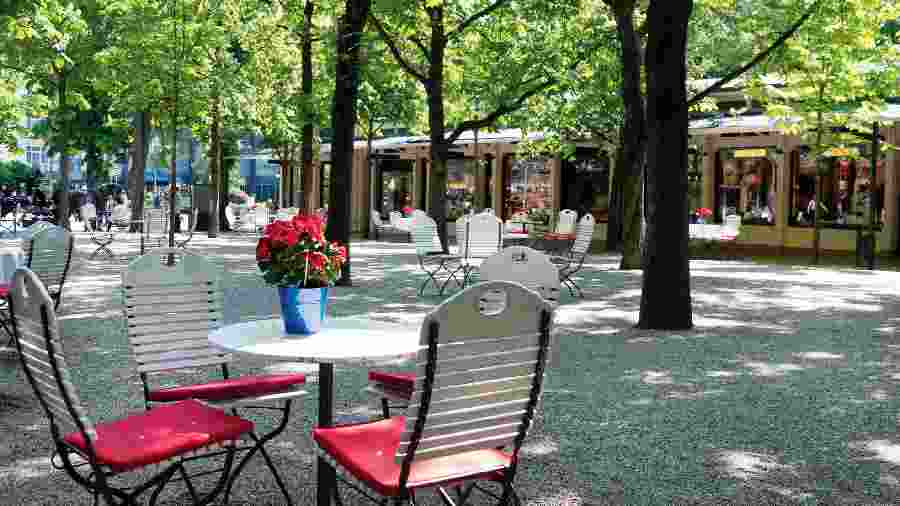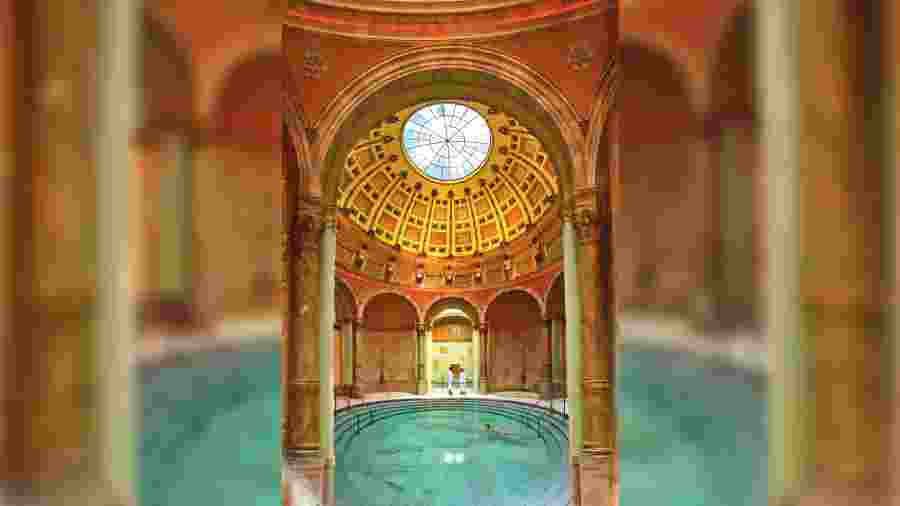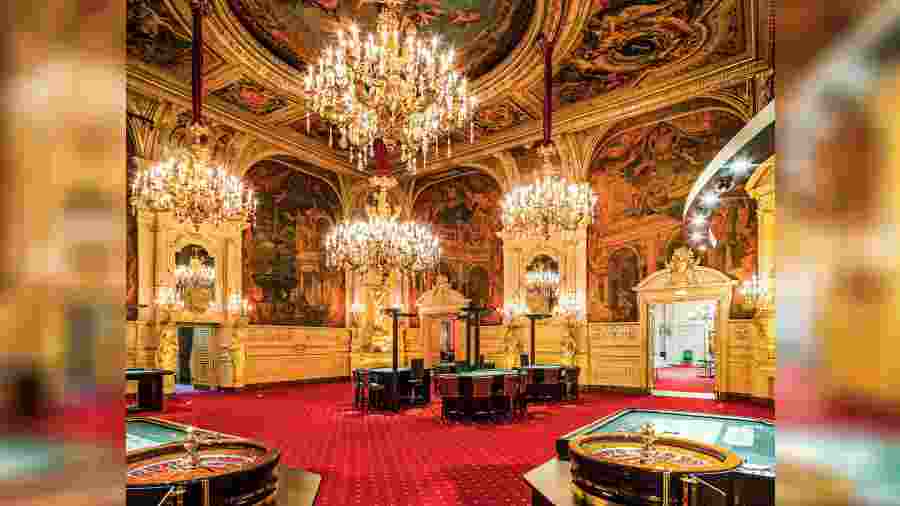Is it possible to get lost in a fist-sized town? Yet I did, as if trapped in layers of a mille feuilles pastry, each sheet exactly similar to the previous one. I was one-day old in Baden Baden, where mountains, forests and streams ripple through the landscape like ribbons swirled around by rhythmic gymnasts.
Sitting at the southwestern tip of Germany, the spa town lies perched between the Black Forest and Rhine Valley. It is where travellers came to live out their dreams since centuries, chasing the palaces and operas, wines and the race tracks. The razzle-dazzle of the resort town earned it the title of Summer Capital of Europe at the end of the 19th century.
It was while walking back from the ‘Old Train Station’, a historical landmark that is now living its modern incarnation as Festspielhaus (Festival Hall) that I took several wrong turns. The 1904-construction is Germany’s largest opera and concert house and has hosted some of the most diverse headlining acts. But getting lost in distant lands have rewards of their own. Often, missed trains and blind alleys have helped me become part of random storytelling sessions on platforms and pavements, where strangers have shared their nicest recipes and wisdom of the roads.
In this small German town, just 140sq km, an aimless stroll will bring you to the banks of the River Oos, a silver thread woven like filigreed jewellery across the Lichtentaler Allee, a densely planted ornamental garden. If you visit in autumn, 300 different varieties of native and exotic trees will be lit up in orange and gold, just like an evening bonfire.
“Composer Johannes Brahms walked through Lichtentaler Allee when he went to the city centre from his rented apartment in Lichtental,” revealed Sascha Schneider, another stranger-turned-friend I met on my long-haul ICE train ride from Berlin to Baden Baden.

Baden Baden Old Town

Museum Frieder Burda

Kurhaus Colonnades
Sascha, wearing his navy-blue trench coat and blonde half bun with spunk, knew the spa town inside out as a longtime resident of Karlsruhe, the closest train stop and the site of Germany’s largest oil refinery. When he spoke of the city of operas and art galleries, his face grew animated, recalling the dreamers and romantics who gathered to celebrate in Baden Baden.
The museums and galleries at the bottom of the Lichtentaler Allee, come back to him in a flash, most notably the provocative exhibitions at the Museum Frieder Burda. The museum, a shrine to modern art, is housed in a glazed wall and sunscreen-themed building conjured up by American architect Richard Meier. Armed with Sascha’s holiday field notes, I dropped by Frieder Burda’s latest exhibition ‘The Painters of the Sacred Heart’, a showcase of the works of Henri Rousseau, Camille Bombois, André Bauchant, Louis Vivin and Séraphine Louis.
These were a group of French autodidacts, outside the boundaries of institutionalised art practices, but pushed into the glare of the spotlight by German art historian Wilhelm Uhde.
A whole afternoon passed as emotional brush expressions charged, leaped and bounded off the gallery walls. Colours and shapes, spontaneous and untrained, offered a refuge to the restless soul. I gravitated towards Vivin’s Les Tigres, a composition of predators and their prey, but also a pastoral scene that connects life and nature in ways that challenged prevalent artistic tendencies. It was an artwork created by a postman who got a once-in-a-lifetime break to tell his story in colours.
But plebeians, like Vivin, hardly got their spot in the sun in Baden Baden. It has always been the city of elites, a salon of sorts, attracting the best in the world of the written word, music and art.

Friedrichsbad spa
And the stories about them never stopped coming. “Fyodor Dostoevsky lived in an apartment near the Friedrichsbad spa. His life was anchored by the casino’s roulette table where he gambled away his money (of course) but then his suit, wedding rings and even his wife’s dress,” sighed Sascha.
It seemed the grand men of letters had a talent for losing their last scrap in this resort town before shaping fallible characters in their novels who were incapable of making sense of a grotesquely unequal world. Leo Tolstoy in Anna Karenina and Dostoevsky in The Gambler invite readers to experience their ruinous encounters with German casinos. “Well, Tolstoy lost money, his own as well as what he borrowed from friends, before saying goodbye to the town once and for all,” chuckles Sascha. “What he won in the bargain could well be his radical ideas that shook up the world.”
Today, Dostoevsky’s casino represents other things. It is a montage of Baden Baden’s many faces. The booming luxury tourism sector, a packed international racing calendar, opera, ballet, concerts, jazz performances, you get the drift. At the casino, you can time travel to a bygone era and live the gilded life of the Shah of Persia, the Windsors and Hollywood stars like Kirk Douglas, who were regulars at this shrine of excess.
Opulence is taken very seriously here. It’s no coincidence that every room in this 19th century structure reminds you of the Palace of Versailles. So, it’s best to act like a high-roller here and play your way through roulette, blackjack, poker and punto banco in the belle époque-themed gambling hall of the casino. Just remember not to put your wedding ring or clothes at stake and you should be fine.
Make no mistake. This is no rough-it-out destination. Maybe you stayed up nights trying to score the cheapest flight deals to get here. But once your feet are planted in Baden Baden, pretending to be the elite vacationer is easy. There’s the Brenners Park-Hotel & Spa, where history-makers like Charles de Gaulle, Nelson Mandela, Barack Obama and Bill Clinton have unpacked their bags. Even in 1975 Frank Sinatra had proclaimed: “Wherever you go, Brenners is the best.” Today, the hotel is celebrating 150 years with new-age royalty walking through its marble-sheathed corridors pockmarked with boutique shops, bars, foyer, cigar lounge and award-winning restaurants.
Around the main shopping drag, it is common to see holidaymakers sipping on local Riesling and Pinot Noir, or nibbling on slices of the Black Forest gâteau showered with cherries. I saw some of them tottering on the cobblestone alleys in vertigo-inducing heels, dragging along shopping suitcases the size of office desks.
Others were headed for boutique shopping to the Kurhaus Colonnade, sitting pretty in the shadow of horse chestnut trees. However, this 19th century structure, modelled like Parisian arcades, has a niche audience. If you go on vacations to pick up precious jewellery and designer threads, the Colonnade is your destination. On the other hand, members of the proletariat, like myself, have to find other distractions. Both restricted by international flight baggage allowance and well, funds, I chose Bäderviertel, the town’s heritage thermal baths quarter, for travel souvenirs.

Kurhaus

Caracalla Spa

The casino
It made sense. After all, thermal baths are the reason why the town came to exist in the first place. Romans settled down in this part of the world for its thermal springs, which promised health and longevity, from second century BC onwards. Close to the French border, Baden Baden was a pitstop in the expansion route of the Romans as well. “Their soldiers needed to rest before setting out to conquer France, you see,” reasoned a friend before I started this trip. “The first thing they did was to construct luxury baths around the springs.”
That’s why one is never far from a spa in Baden Baden. The fabled Friedrichsbad, in the old spa quarter, is a walkable distance from any part of the town. Experiencing its joys is another story though. I had been warned before setting foot here. “You know Friedrichsbad is a nude spa, right?” friends had cautioned. “Don’t think they will let you put on a bikini or swimsuit.”
I had been provided a primer on the German bathhouse culture by well-wishers way before my tickets were booked. It involved advice on keeping an open mind about nudity inside bath houses, especially around the spa facilities, saunas and heated pools. “Being naked in a German spa is not a big deal. It’s to do with their wellness concept,” they chimed in.
While it’s great to spout travel advisories sitting hundreds of miles away, letting it all hang out is not an easy philosophy to embrace. It is particularly awkward in an age when unrealistically chiselled shapes are celebrated. I was anxious that my au naturel look, with its cellulite perfection, would turn out to be a horror movie trailer for other spa junkies. But Friedrichsbad, the spa of history books (it was built between 1869 and 1877), had something else to show me. Yes, they don’t let clothes come in the way of therapy (I finally didn’t ditch my clothes and chose the swimsuit friendly Caracalla spa later) but it was so much more than that.
Friedrichsbad had life lessons to offer. Its cathedral-like amphitheatre, built in the Neo-Renaissance style, let me take a dip into the sights and sounds of an ancient time. It was a portal to the past when the Grand Duke Friedrich von Baden could tell his architect to roam around the spectacular bathhouses of Europe and build the best for him. The stories were magical and healing. Just like the thermal spring’s mineral-rich water that’s between 12,000 and 17,000 years old and is believed to bring relief to miseries of the flesh. “It’s a rigorous sequence of ablutions,” said a spa visitor I met outside the exit. “Of warm air baths, hot showers, soap and brush scrubbing, baths in pools of varying temperatures and more.” I looked at him in surprise, wondering if he had travelled from another corner of the world to undergo a punishing regime.
He had not. I realised only much later that the whole point of his Friedrichsbad experience was not about finding a cure. It was about the simple act of letting go and feeling the stillness of time. In so many ways, fears about what others will think about our body, or worse, what we think of our own body, haunt us. What can liberate us from judgement is the exercise of being naked with people who are also trying to heal. It is the only way we are stripped bare — of make-believe, delusions. It is the same liberation I seek when I get lost.
Pictures courtesy Baden-Baden Kur & Tourismus GmbH and Raven Cheng
